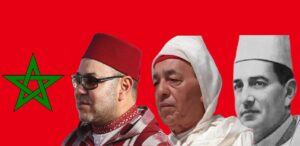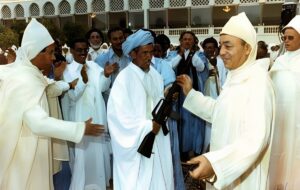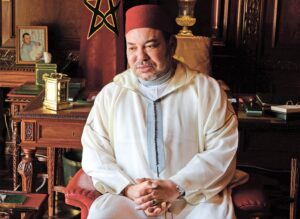The Era of Mohammed VI... Fifth: Strengthening the Social Fabric, Between Spiritual Security and the New Development Model
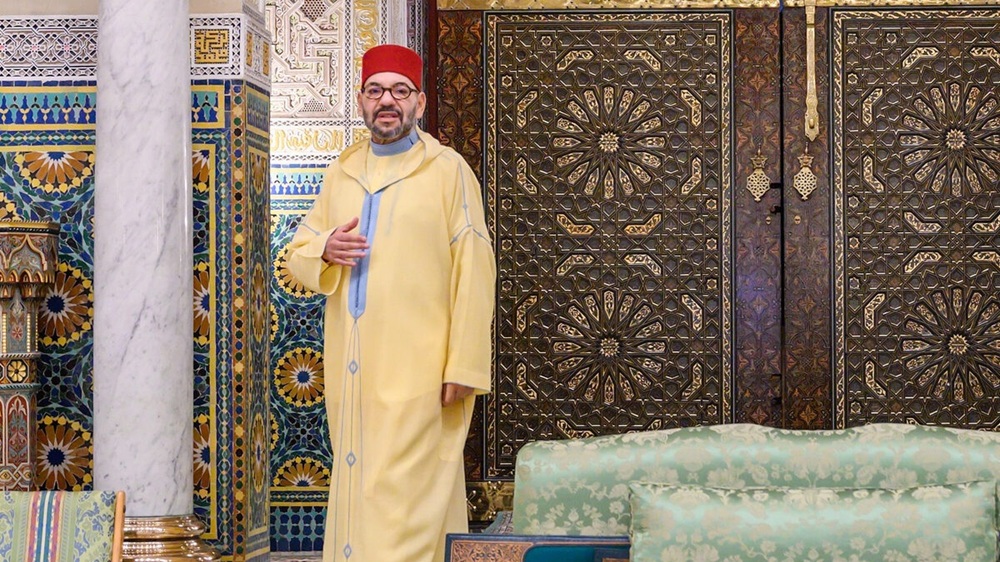
In reviewing the most prominent features of what we have dubbed the “Era of Mohammed VI” and the foundations for restoring the historical status of the honorable kingdom, and after reviewing the philosophy of governance and the new concept of authority inaugurated by King Mohammed VI upon assuming power, and the most prominent security, political, and economic achievements that Morocco has experienced over the past twenty-six years, we come to the primary target of this integrated structure: the Moroccan citizen. This citizen, who is at the center of this “era,” directs its goals and determines its successes, has placed the goal of comprehensive development at the heart of the various programs outlined—security, political, economic, social, and spiritual—and we can now monitor the most prominent achievements made in this regard.
Let's start with Morocco's per capita share of national income, which rose from $1,560 in 1999 to $4,240 in 2024, nearly doubling during the reign of King Mohammed VI. Despite these positive figures, the Moroccan monarch, with his usual courage, has warned of his dissatisfaction with the distribution of this wealth among various segments of society, emphasizing the need for the benefits of this economic growth to spread to all Moroccan regions, especially the least fortunate. This prompted King Mohammed VI to form a committee to review the foundations of Morocco's "new development model" with the aim of bridging the aforementioned gap. It is true that a developing country like Morocco, striving to establish a strong economic position among nations, is still in the seed-sowing phase and has yet to reach the harvest stage. However, the general feeling among the people is that their country is progressing, their conditions are improving, the services provided to them are evolving, and they have many reasons to look to their future with obvious optimism.
Because "man does not live by bread alone," it was imperative to address other aspects of securing Moroccan society and caring for its members. Thus, the spiritual dimension was a central element, a matter closely aligned with the bond of "allegiance" that surrounds the Commander of the Faithful, King Mohammed VI, and his loyal people. This concern for the "spiritual security" of Moroccans was translated into preserving Morocco's unique religious model, characterized by moderation, tolerance, and coexistence among its people, its scholars' distance from extremism, and Moroccans' acceptance of the differences that may come with openness to the "other," regardless of their religion or sect. Mosque construction has witnessed a remarkable development, including the restoration of ancient mosques, accompanied by improvements to the conditions of imams, preachers, and those in charge of these mosques. This has provided Moroccans with a unique environment, unparalleled in the Islamic world, in which to practice their rituals with complete peace of mind. This is reflected in the images and videos of mosques during Ramadan, which fill social media and are shared by people across the Islamic world. As evidence of the success of this policy, we will suffice with citing two points: Morocco’s continued freedom from the scourge of terrorism linked to movements falsely affiliated with our true religion, called “jihadist,” which are active in Morocco’s surroundings, particularly in the Sahel region, a matter to which vigilant security services naturally contribute; and Morocco’s transformation into a destination for the training of African imams, through the “Mohammed VI Foundation for African Ulema,” which has undertaken the training of hundreds of imams, preachers, and missionaries of both sexes, to contribute to the spiritual security of the societies from which they came.
Not far from this context, the issue of amending the Family Code in its two versions, 2004 and 2025, stands out. This reflects the Commander of the Faithful's concern to keep pace with the evolution of Moroccan society, with an evolution in jurisprudence and ijtihad regulating the personal status of Moroccans and their families, within the context of religious constants, through a societal debate whose sophistication is unparalleled in the rest of the Islamic world.
Because the vitality of any society is dependent on the well-being of its largest segment, the youth, attention to this group has been a prominent theme of the "Mohammed VI Era." This includes providing new job opportunities in emerging economic sectors, ensuring a sophisticated infrastructure where they can practice various types of sports, and fostering "third-time" cultural and recreational activities that fill these youth's free time with useful things. This policy has enabled Moroccan youth to enter the fields of precision industries such as automobiles, aircraft, microchips, and renewable energy, among others. It has paved the way for the Moroccan national football team to be among the top four at the 2022 World Cup in Qatar, and has expanded the scope of Moroccan youth's creative talent to reach various parts of the world.
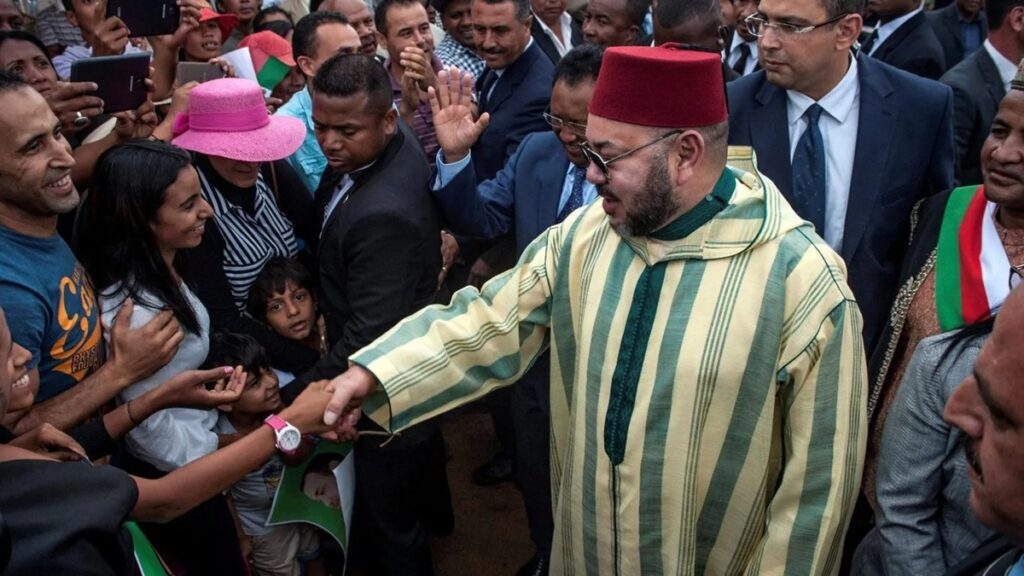
Because Moroccans are not limited to those residing in their homeland, but also include its emigrants and expatriates, their share of attention has been abundant and clear. This began with the organization of the bodies responsible for overseeing their affairs, through the establishment of the "Council of the Moroccan Community Abroad" and granting it the necessary powers to fully carry out its duties towards Moroccans abroad. This continued with the provision of advanced consular services, close to those most distant, overseeing their affairs and safeguarding their interests. This ended with attention to their spiritual well-being and strengthening their ties to their homeland, through the provision of imams to oversee the mosques where they perform their religious rituals. The "Marhaba" operation, overseen by the "Mohammed V Foundation for Solidarity" in cooperation with various state agencies, to facilitate the annual return of emigrants to their homeland for the purpose of spending the summer vacation, is evidence of this concern.
The final important aspect to highlight when discussing Moroccan society relates to the boom in civil society organizations and the spirit of initiative that reflects the rich Moroccan character and demonstrates the depth of its culture of solidarity, which enables Moroccans to channel their generous energies in the right direction. Perhaps the Al Hoceima earthquake experience, the subsequent solidarity initiatives, and similar seasonal solidarity campaigns for remote villages suffering from difficult conditions during a difficult winter, are clear evidence of the authenticity of the people of this land: their positive energy, their creative abilities, and their sublime sense of patriotism.
This comprehensive royal vision for Moroccan society and the needs of its various segments has achieved a shift that Morocco will benefit from (as we will see in the next episode) in building a "soft power" that will project a bright image of itself throughout the world, making Morocco a "registered trademark" for creativity, giving, vitality, coexistence, resilience, and other positive values. The sight of mothers in the stands of the World Cup in Qatar (and later in the Royal Palace in Rabat) cheering on their children, who in turn returned the favor with kisses on the hands and head, was unprecedented in football stadiums among the peoples of the world. This provided the most eloquent evidence of the "uniqueness" of this society and its people, their civilizational depth, the richness of their culture, the nobility of their spirit, and their ability to set an inspiring example for anyone looking for something respectable and different!



